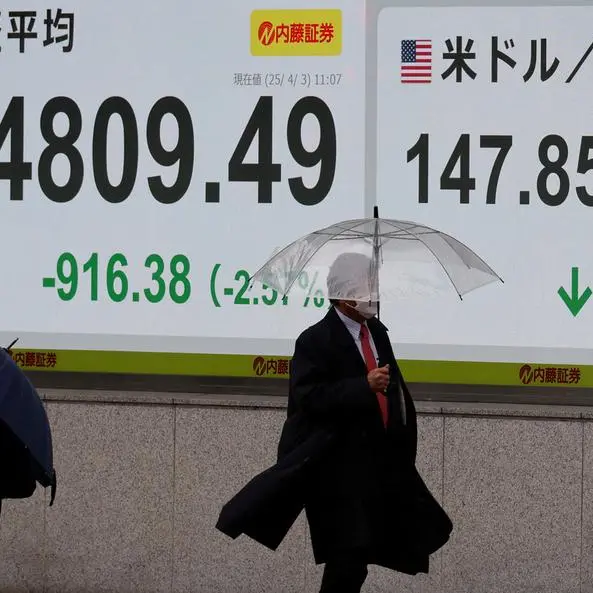PHOTO
Robocop joins Dubai police force. Image used for illustrative purpose.
With robots – or, in software jargon, ‘bots’ – continuing to replace human activity in an increasing number of industries, the financial markets are not far behind. More capital markets have started deploying bots to replace humans in repetitive tasks such as processing transactions, collating and manipulating data, triggering responses and communicating with other digital markets.
There is even a phrase to describe this: Robotic Process Automation, or RPA, which is simply software that helps automate any repetitive, rules-based and high-volume processing of business data. It replaces human effort and, at the same time, minimises human error and miscalculation.
The bot captures and mimics the human steps required to execute a task. It interfaces with information systems in just the way a human would. It logs in, gathers specific pieces of data, processes them using structured rules, sends the finished work to the required destination and then logs out. This allows businesses to increase accuracy and productivity and decrease cycle times and move human resources from dull, repetitive tasks to ones that are creative and value-added.
Research has shown that RPA can achieve 25-50 per cent cost savings by improving the accuracy and efficiency of repetitive, data-intensive tasks; exactly the kind of activities that back offices in capital markets often struggle with.
“In the GCC countries, progressive governments like the UAE are already taking the first steps towards embedding RPA into multiple sectors, with the private sector also following suit. Capital markets in the region are still considering the transition based on whether the trading volumes are high enough to warrant the introduction of RPA,” said Mayank Sawhney, Partner at accountancy firm Crowe.
With the UAE, Qatar and Saudi markets tagged as ‘Emerging’ rather than ‘Frontier’ by index compiler MSCI, the burgeoning interest from international institutional investors will also drive the markets more quickly towards RPA, he said.
RPA in the capital market
While today’s capital markets have adopted sophisticated front-office trading platforms that generate millions of lightning fast trades, the middle and back office operations are still laboriously managed by paper pushers, leading to errors and inefficiency as details of each trade are received through email and manually uploaded to the back office systems before being reconciled separately.
However, newer and more tech-savvy capital markets are turning to RPA to make them more nimble and profitable, especially as the regulatory environment becomes increasingly elaborate and complex. There are some key areas in which RPA makes a huge difference:
Client on-boarding: RPA can deliver faster and cheaper improvements to client on-boarding, regulatory compliance and reporting.
Capital market and financial companies have to comply with multiple and complex national and international regulations — such as KYC (know your customer), AML (anti-money laundering) and FATCA (Foreign Account Tax Compliance Act, which applies to U.S. investors) – where they collect, input and analyse data for every client. RPA not only inputs data submitted by the client and updates records periodically, but it also combs news and public information services and updates a client profile on an ongoing basis.
Operational set-up: RPA can take over the operational tasks related to the setting up of a trading account.
Reconciliation of post-trade operations: Once the buyer and seller complete a trade, it has to be verified, documented and reconciled across systems. RPA can be deployed to reconcile the data between two systems and identify mismatches.
According to a report by global management consultancy Accenture, RPA will improve process speed and efficiency by as much as 80 per cent in post-trade, back-office operations in trading companies.
Collateral management: RPA in collateral management can manage cash and non-cash collateral for covering margin requirements, as well as cash transactions for daily cash settlement. The bot continuously assesses the posted collateral using market prices to ensure the collateral value is sufficient to cover the margin requirement.
DVP/FOP settlement: Instead of laborious manual verifications, RPA can match delivery versus payment (DVP) or free of payment (FOP) settlement instructions based on pre-set rules.
Reporting: RPA can be deployed to extract data for internal reports, compare information and highlight discrepancies. RPA can also create and send template-based annual and quarterly reports to regulators.
Bots are also able to generate and distribute daily reports to help clients monitor their trading accounts.
Asset servicing: RPA helps to calculate and distribute dividends and stock splits within defined time frames.
Minimising trade fails: One of the reasons for a trade fail is due to unmatched instructions being sent by participants or mistakes in processing by back offices. This can be minimised when RPA bots automatically extract the missing data or correct the mistakes.
Audit trail: Use of RPA ensures bots record and maintain all activity as session logs. This provides a fully operational audit trail that is essential for regulatory compliance.
“The advantages of regional markets going RPA are many. It increases transparency and accountability. This helps identify and root out undesirable activity like insider trading.” Sawhney said. “Embedding RPA also enables the market to increase the speed of transaction processing, which in turn helps in effective price matching. These have the potential to attract global institutional and major individual investors, thereby deepening the market.”
Ashish Gupta, a director at MaxGrowth Consulting, a financial and business consultancy firm, believes that companies listed on a capital market would benefit from the introduction of RPA. “The improved processing speed increases trading volumes and turnover. Besides, the higher degree of global confidence in the market helps the companies listed on it to raise capital more easily,” he said.
Beyond RPA
While RPA works very well in automating rule-based and repetitive processes where it can handle massive volumes of structured data in a short time, it cannot replicate human inputs and judgement calls. That’s where the next level of automation is likely take us — a combination of artificial intelligence (AI) with RPA or intelligence process automation and cognitive automation.
According to Accenture, capital markets will potentially be able to leverage AI and cognitive RPA to take on post-trade processes like:
Referential data: Static data maintenance and product classification.
Trade confirmation and settlement: Automation of the trade validation and confirmation process by predicting trends and patterns and analysing business rules.
Collateral management: Margin call processing and dispute resolution.
Reconciliation: Complex reconciliations that require human judgement can be managed by AI by predicting patterns and sending recommendations to the operations team.
(Reporting by Yazad Darasha; Editing by Michael Fahy)
(michael.fahy@refinitiv.com)
Our Standards: The Thomson Reuters Trust Principles
Disclaimer: This article is provided for informational purposes only. The content does not provide tax, legal or investment advice or opinion regarding the suitability, value or profitability of any particular security, portfolio or investment strategy. Read our full disclaimer policy here.
© ZAWYA 2019






















